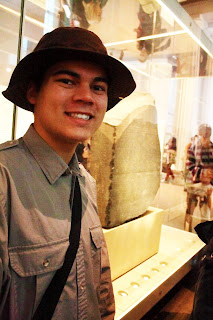What is money and why
do we need it? How did it come about in
the first place? This is a question that
I addressed in conversation recently with a friend after visiting the Hong Kong
Monetary Authority, its equivalent of the Federal Reserve.
Everyone knows
intuitively what money is: a medium of exchange and permanent store of value. In other words, one person has coins and
bills and another person has coffee beans, guitars, or microscopes. They trade one for the other and everyone
goes on his way. The permanence of money
is also an important characteristic. It
would not do to have currency that decays over the course of time!
Where did money come
from and why do people use it rather than just bartering like our ancestors
used to, and why do we use paper or metal which have no intrinsic value rather
than something that does have value?
The need for money is
shown in the following story, as related to our class by my first economics
professor. Imagine that you are a maker
of guitars and that you want to get coffee.
So you take your guitar to a coffee farmer and try to work out an
agreement on a trade. The problem
arises: what if the coffee farmer does not want a guitar? Or what if he does not have enough beans on
hand to pay you for that guitar? In
modern terms, for example, 45.4 pounds of Starbucks coffee costs the same as a
Fender Stratocaster, (if our ancestors had the benefit of price shopping on
Amazon.com)! The problem with a pure bartering system is that not everyone
wants what you have or perhaps they do but cannot accommodate your requirements
for the trade.
This is where money
comes in: a society agrees on something that will be used to facilitate
exchange whether it is coins, stones, shells, salt, metal ingots, or any number
of other items used by civilizations in the past. Besides society-wide acceptance of their
value, money possesses at least one other advantage over trading goods for
goods: it is easily divisible. You will
notice that half of a guitar, a third of a cart, and the base of a microscope
are no good to anyone. In other words,
if our farmer from above didn’t have 45.4 pounds of coffee on hand, the trade
would not go through. But with money,
the trade can happen between anyone who has money and anyone who is selling
something. To recap, these features can
be seen in money all over the world: easy divisibility, society-wide or universal
acceptance in a country, and usually permanence in the material used to make it. There are few
exceptions but one or two of the most prominent ones deserve to be the subject of the
next post.



0 comments:
Post a Comment